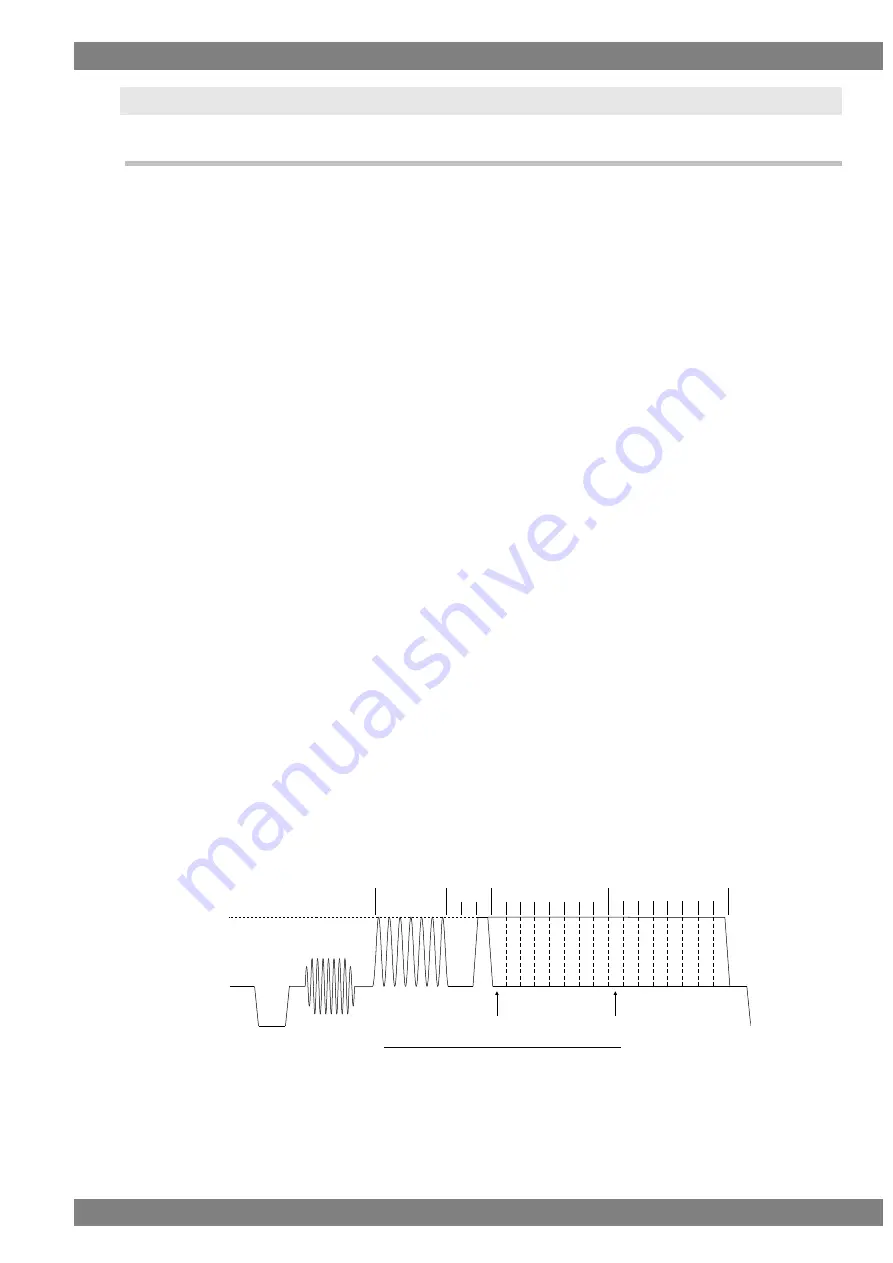
Chapter 11 FUNCTIONS AVAILABLE WITH TV STANDARD SIGNALS
493
11.2. Closed captions/V-Chip
11.2.1. Description and specifications
■
What does the closed caption (CC) function do?
Closed captioning was developed in the United States, and it provides broadcasts with subtitles for the hearing
impaired so that people who are deaf or hard of hearing can enjoy movies and news programs.
The captions are “closed” in the sense that they are not displayed on the screen during normal playback.
Conversely, the Japanese-language subtitles and other such characters used with video content which are
“burned into” the images from the start are referred to as “open captions.”
Although closed captioning was originally developed as a technology for the hearing impaired, it is currently
attracting the attention of educators and language learners as a tool which helps develop “listening.”
The CC subtitle data is superimposed onto line 21 (first field) and line 284 (second field) of the NTSC output
signals, and output. The subtitle data has two modes, captions and text. Another available service is the Extended
Data Service (EDS) which transmits titles, ratings and other program information using line 284 (second field).
The V-Chip described below uses the EDS function.
A total of 32 characters can be displayed per line by CC. There are 15 lines, but the maximum number of lines is
limited to 4 in the caption mode (CC1 to 4). All 15 lines can be displayed in the text mode (T1 to 4).
■
What does the V-Chip do?
The V-Chip refers to a semiconductor chip that blocks out TV programs containing violence, bad language and
sex situations. “V” refers to violence, and the viewing of programs is blocked out according to the ratings which
are categorized by the extremity of the program content. Once the ratings are set in a receiver (TV set) which
incorporates the V-Chip function, the rating information of EDS is decoded, and whether the programs is to be
output to the screen is automatically determined.
■
Specifications of closed caption/V-Chip
Closed caption/V-Chip supports the TV signals of the following systems.
Closed caption/V-Chip is superimposed onto the composite signals and Y/C signals.
• NTSC-M, NTSC-J, NTSC-443
• PAL, PAL-M, PAL-Nc
Note) When 625-line timing (PAL, PAL-Nc) is output, the caption data is superimposed on the 21st line (334-line).
The closed caption/V-Chip waveform is shown below. Following the color burst come a sine wave known as Clock
Run-
In and continues to the start bit. The start bit is always “001.” Two bytes of data (Char1, Char2) are sent for
each line. Char1 and Char2 are decoded from LSB, and an odd parity is usually added to MSB (bit 8).
Start Bit
Character One
Clock Run-In
Character Two
s1
s2
s3
b0
b1
b2
b3
b4
b5
b6
p1
b0
b1
b2
b3
b4
b5
b6
p2
50IRE
0IRE
LSB
LSB
Closed Caption / V-Chip (21Line System)
Содержание VG-876
Страница 1: ...Video Signal Generator VG 876 Instruction Manual Ver 3 40 ...
Страница 2: ......
Страница 30: ...16 ...
Страница 57: ...Chapter 3 TIMING DATA SETTINGS 43 ...
Страница 103: ...Chapter 4 PATTERN SETTINGS 89 1 2 3 4 5 6 0 ...
Страница 134: ...120 GUI Display Selected port ...
Страница 135: ...Chapter 4 PATTERN SETTINGS 121 HEX Display Selected port ...
Страница 143: ...Chapter 4 PATTERN SETTINGS 129 ...
Страница 177: ...Chapter 6 HDCP SETTINGS AND EXECUTION 163 ...
Страница 205: ...Chapter 7 VG 876 SYSTEM SETTINGS 191 ...
Страница 223: ...Chapter 8 DATA COPYING ERASING 209 ...
Страница 237: ...Chapter 9 USEFUL FUNCTIONS 223 ...
Страница 312: ...298 Horizontally 2 split output Split Mode 0 2 select either one of them Data Transfer assignment Split Image ...
Страница 336: ...322 10 5 3 Data transfer method Normal MODE 2Lane output ...
Страница 338: ...324 Normal MODE 4Lane output ...
Страница 374: ...360 Assignment of each lane Lane 1 2 Lane 5 6 Lane 9 10 Lane 13 14 Lane 3 4 Lane 7 8 Lane 11 12 Lane 15 16 ...
Страница 376: ...362 Assignment of each lane ...
Страница 378: ...364 Assignment of each lane Lane 1 4 Lane 9 12 Lane 5 8 Lane 13 16 ...
Страница 380: ...366 Assignment of each lane Lane1 4 Lane9 12 Lane5 8 Lane 13 16 ...
Страница 382: ...368 Assignment of each lane Lane1 8 Lane9 16 ...
Страница 384: ...370 Assignment of each lane Lane1 8 Lane9 16 ...
Страница 386: ...372 Assignment of each lane Lane1 8 Lane9 16 ...
Страница 388: ...374 Assignment of each lane Lane1 4 Lane9 12 Lane5 8 Lane 13 16 ...
Страница 390: ...376 Assignment of each lane Lane1 4 Lane9 12 Lane5 8 Lane 13 16 ...
Страница 392: ...378 Assignment of each lane Lane1 16 ...
Страница 453: ...Chapter 10 INTERFACE SETTINGS 439 Connection figure of VM 1876 MX s ...
Страница 464: ...450 Reverse Mode Top Bottom Reverse Mode LR TB ...
Страница 465: ...Chapter 10 INTERFACE SETTINGS 451 Multi VGMode V4Div Vertical Split Reverse Mode No Reverse Reverse Mode Left Right ...
Страница 466: ...452 Reverse Mode Top Bottom Reverse Mode LR TB ...
Страница 467: ...Chapter 10 INTERFACE SETTINGS 453 Multi VGMode V2Div Vertically 2 split Reverse Mode No Reverse Reverse Mode Left Right ...
Страница 468: ...454 Reverse Mode Top Bottom Reverse Mode LR TB ...
Страница 495: ...Chapter 10 INTERFACE SETTINGS 481 2 When Video Width is 8 bit ...
Страница 496: ...482 3 When Video Width is 10 bit ...
Страница 501: ...Chapter 10 INTERFACE SETTINGS 487 2 When iTMDS output ...
Страница 504: ......
Страница 538: ...524 ...
















































